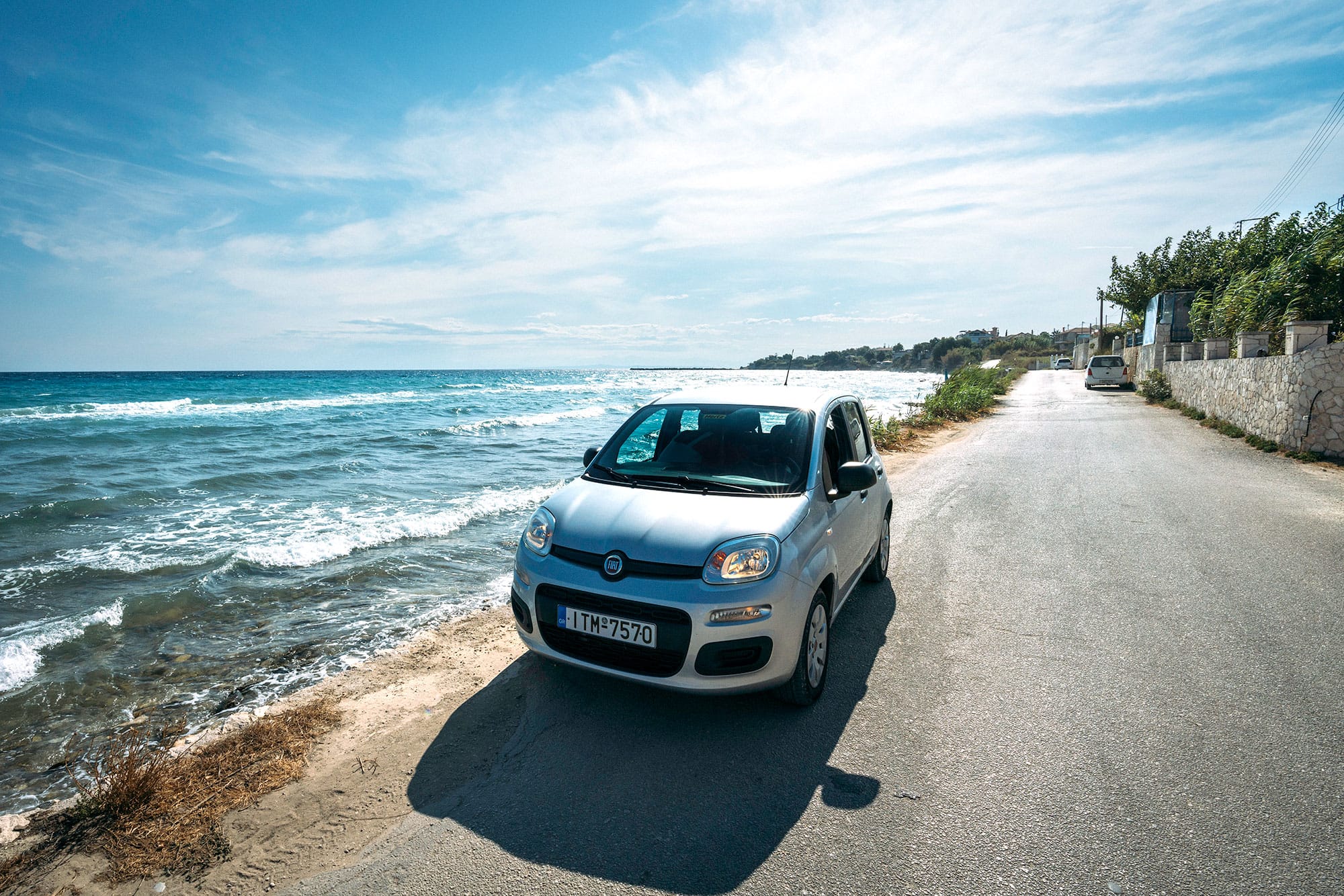Driving through Greece feels like opening a door every few hours to a new world. You leave a cove with water so clear it looks like glass, then twenty minutes later you are inside a stone village that smells of thyme and woodsmoke. The country rewards curiosity, and a car gives you the freedom to follow it. Trains and buses cover the famous places, but Greece is full of side roads, mountain passes, tiny ports and wineries that sit just beyond the bus stop. That is where a steering wheel matters.
Start with the rhythm of the roads. Greek highways are modern and fast, with regular service stations and clear signage in both Greek and English. Toll booths appear often on the major arteries, so keep a card or some coins at hand. Once you leave the main road, expect narrower lanes that fold around olive groves and dry stone walls. Patience pays off. Locals know each bend and will often move aside to let you pass. Do the same when they appear in the rear mirror. Roundabouts are common. Use your indicators clearly and claim your space with confidence but never in a rush.
Athens is a place to collect a car only if you need to, not to learn city driving. The center is busy and parking is a puzzle of colored zones and private lots. Many travelers prefer to pick up a vehicle at the edge of the city or leave the capital entirely and start where the lanes open up. Once you reach the Peloponnese, the pace changes. The coastal drive from Corinth to Nafplio lays out gentle curves, sleepy beaches, and small towns where oranges hang over the pavement. Stop for grilled sardines and a small salad, then continue south to Leonidio and the red cliffs that tumble straight into the sea. In spring, wildflowers line the road and the mountain air smells like rain even on sunny days.
The Mani peninsula is another reward for those with a wheel in hand. Tower houses rise from bare rock. The sea is cobalt and deep. Roads are quiet. It is easy to combine a swim in a pebbly cove with a visit to Vathia or a detour to the caves of Diros. Many of the best tavernas sit just outside the villages, where parking is simple and the view is better.
On the mainland north of Athens, Meteora is all about curves and height. The monasteries perch on pillars of stone and each one offers a view that widens the world. Driving up in the late afternoon is a pleasure. The tour buses are gone, the air cools, and the rocks catch a warm color that you cannot forget. Nearby, the road to the mountain village of Pertouli twists through dense forest and small meadows. It feels like a different country for a few hours.
Crete deserves its own chapter. The island is long, mountainous, and stitched together by a coastal highway that makes point to point travel easy. The real magic happens when you turn inland. In the western part of the island, Chania is a place where Venetian facades line a small harbor and the mountains rise behind the town like a painted backdrop. If you plan to pick up a vehicle there, look for a provider who understands island distances and local roads. You can easily arrange to rent a car in Chania and start with an early morning drive up to Omalos before hikers fill the buses to Samaria Gorge. Continue on to the village of Zourva or Theriso for lunch, then return by a different route. The loop gives you both the sea and the mountains, plus a dozen places to stop for a coffee that tastes like roasted almonds and smoke.
Crete’s interior is full of quiet roads through chestnut groves and vineyards. Sheep occupy the asphalt in the morning, so keep a soft foot on the brake and enjoy the scene. In late summer, when the wind is warm and dry, you can cross the plateau of Askifou and descend to the south coast where the water looks like polished turquoise. Most beaches have small gravel lanes that lead right to the edge, easy for parking, and there is usually a taverna close enough to walk barefoot for a plate of dakos or grilled octopus.
On the eastern side of the island, Heraklion is the gateway to Knossos and to smaller roads that run to villages like Archanes and Houdetsi, where time slows and the air carries the smell of grape must. If you need a vehicle there, it is simple to rent a car in Heraklion and use the city as a base. Leave early, visit Knossos before the heat, then head into the hills for a slow lunch. In the afternoon, continue to the beaches around Matala or the palm forest at Vai, depending on where the wind sends you.
Island driving is not just Crete. On Naxos, the interior holds marble villages where old men sit with coffee cups and radio music filters from an open window. Paros has back roads that run between dry stone fences to small blue domed churches. In both places, a small car is your friend. Lanes can be narrow and many village streets are one way or effectively so. Look for the main plateia and you will often find a simple place to leave the car and walk the last few steps.
When you cross to the mainland north of the great Thessalian plain, you arrive in Macedonia, a region of wide views and long memories. Thessaloniki, the second city, sits on a generous bay and feeds you at any time of day. The ring road is busy, but it makes it easy to skip the center if you want to continue to Halkidiki for beaches and pine scented air. If you do plan to explore the city first, you will find many car rental options in Thessaloniki that allow pickup near the airport or in town, which is convenient if you want to leave the next morning for the peninsula. Early starts are best. Roads to Kassandra and Sithonia fill quickly in July and August, and a head start turns a queue into a cruise.
Halkidiki is made for slow days. The first finger has long beaches and family friendly hotels. The second finger is more rugged and full of small coves that reward the patient driver who turns down the unmarked lane just to see what is there. When you find your spot, you can swim in water so clear that your shadow floats on the sand. In the evening, drive inland to Nikiti or Arnea for dinner under plane trees and a glass of local wine. The third finger points toward Mount Athos. You cannot drive into the monastic state, but the road to Ouranoupoli is lovely and the bay at Ammouliani is an easy day trip with a short ferry.
Practical notes help the pleasure. Gas stations in rural areas can close early on Sunday, so top up in the afternoon. Most rental agreements do not allow driving on rough tracks. If a lane looks like a goat path, treat it as one and park before the last bend. In towns, look for blue lines that indicate paid parking and white lines that are usually free. Yellow often means reserved. Many villages simply have an open square where cars collect as neighbors do. If you are unsure, ask the person at the nearest kiosk. Someone will always give you a clear answer and often with a smile.
Food and sleep are part of the journey, and with a car you can mix the famous with the humble. Eat grilled fish on the beach at Karavostasi in Epirus, then drive twenty minutes up to Parga for a stroll along the promenade where the houses are painted in cheerful colors. In the Pelion peninsula, villages like Tsagarada and Agios Lavrentios sit among chestnut trees and have guesthouses where the breakfast tastes of mountain honey. The roads here are narrower and twist into the forest, which makes the first glimpse of the sea even better when it appears below you like a strip of bright silk.
Greece rewards early mornings. Start before the sun climbs and the light is soft and pink. You pass through towns as the bakers open and the first tray of koulouri comes out. Buy one and eat it at a viewpoint while the world wakes up. At midday, when the heat is high, stop and rest. Shade, a long lunch, and a swim make the afternoon drive fresh again.
If history is part of your plan, a car connects the dots. From Delphi you can continue to Galaxidi for a quiet harbor and the sound of halyards tapping masts. From Mycenae it is a short drive to Nemea for wineries and cool cellars. From Olympia you can cross to the west coast and watch the sun drop into the Ionian Sea at Kyparissia. The distances are manageable, the scenery is generous, and the road itself becomes part of the story.
Families will find that a car turns logistics into leisure. Beaches with shallow water and gentle entrance are easy to reach on both the Ionian and Aegean sides, and you can leave towels and toys in the trunk instead of carrying them through a bus station. Grandparents can join the trip and rest when they wish while the others take a short walk. Grocery stops for picnic lunches are simple. Each day can respond to the weather, the energy level, and the wishes of the group.
For those who love walking and nature, a car opens trailheads that sit far from town. In Crete alone you can hike the Imbros Gorge one day, then drive along the south coast to Loutro the next, where the only way in is by boat or on foot. On the mainland you can climb Mount Olympus with a proper early start, then recover on a beach near Platamonas that same afternoon. The variety is real and constant.
Music on the radio changes as you cross regions. In the islands you hear a lyra or a laouto. In the north there is a different beat. Keep the windows open and collect these small sounds. Let the car be a moving room where the country enters. That is the charm of driving in Greece. You string together coves and peaks, grilled fish and stone villages, mountain air and city sea breezes, and you do it at your pace. The map is not just lines and names. It is a menu, and with a car you get to order freely.




























